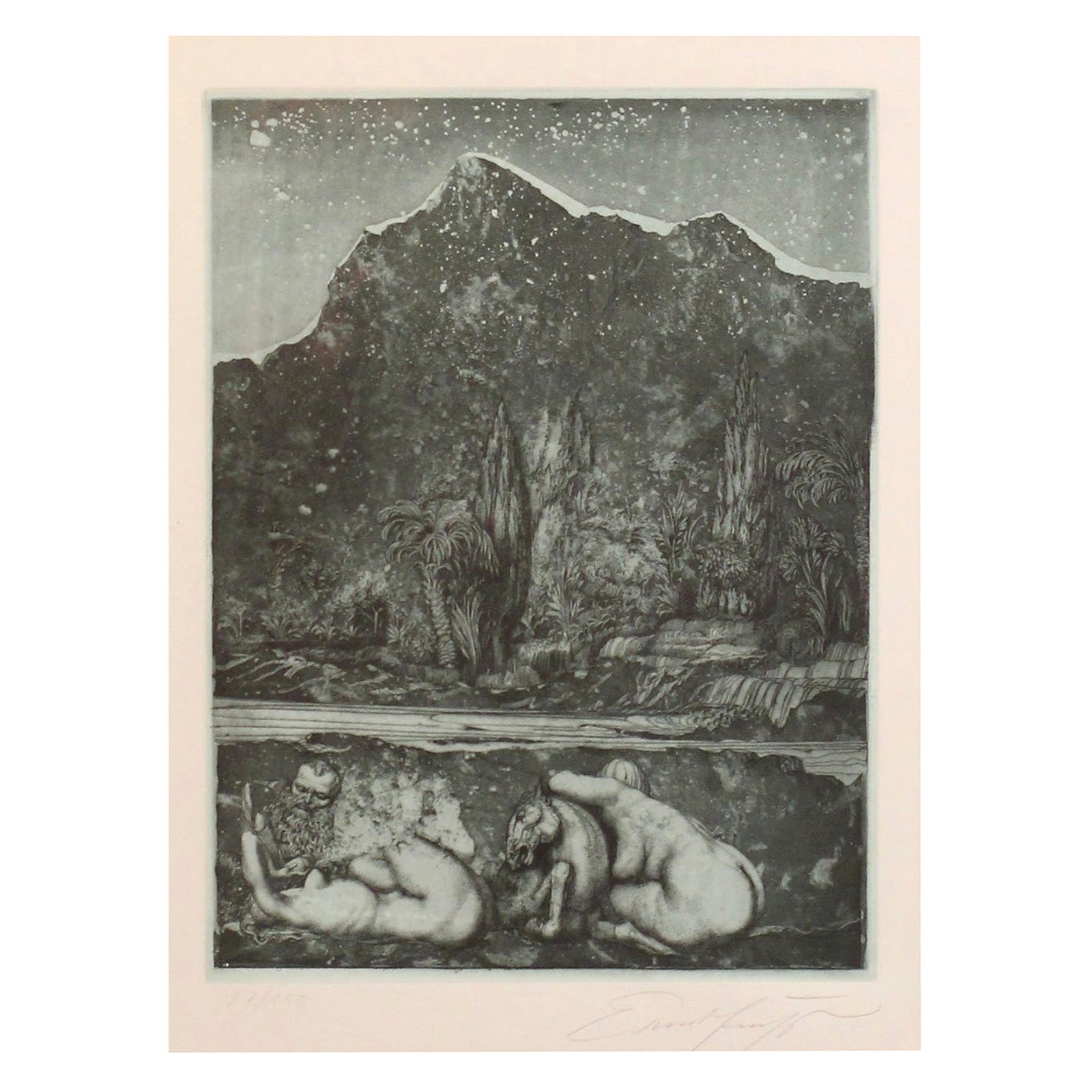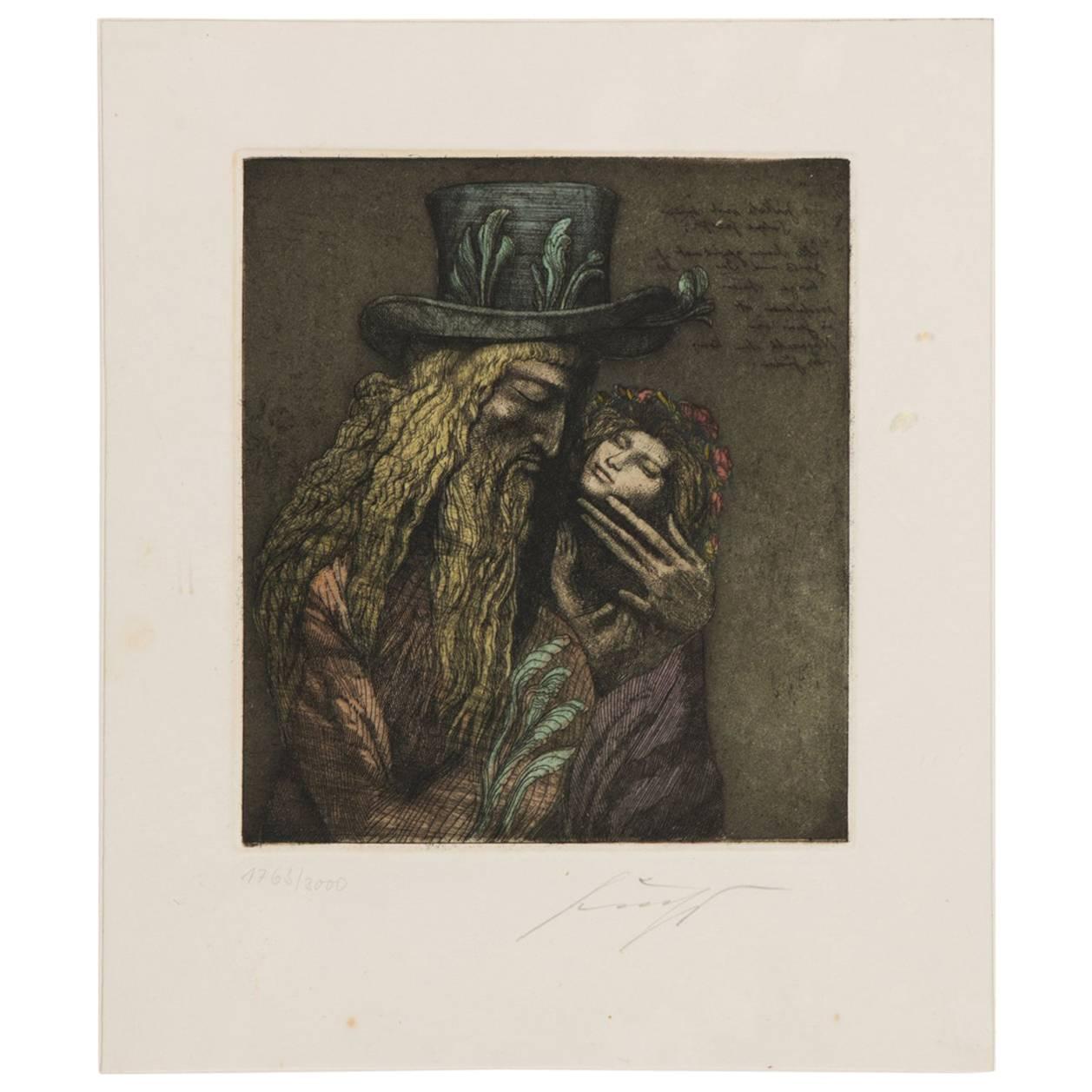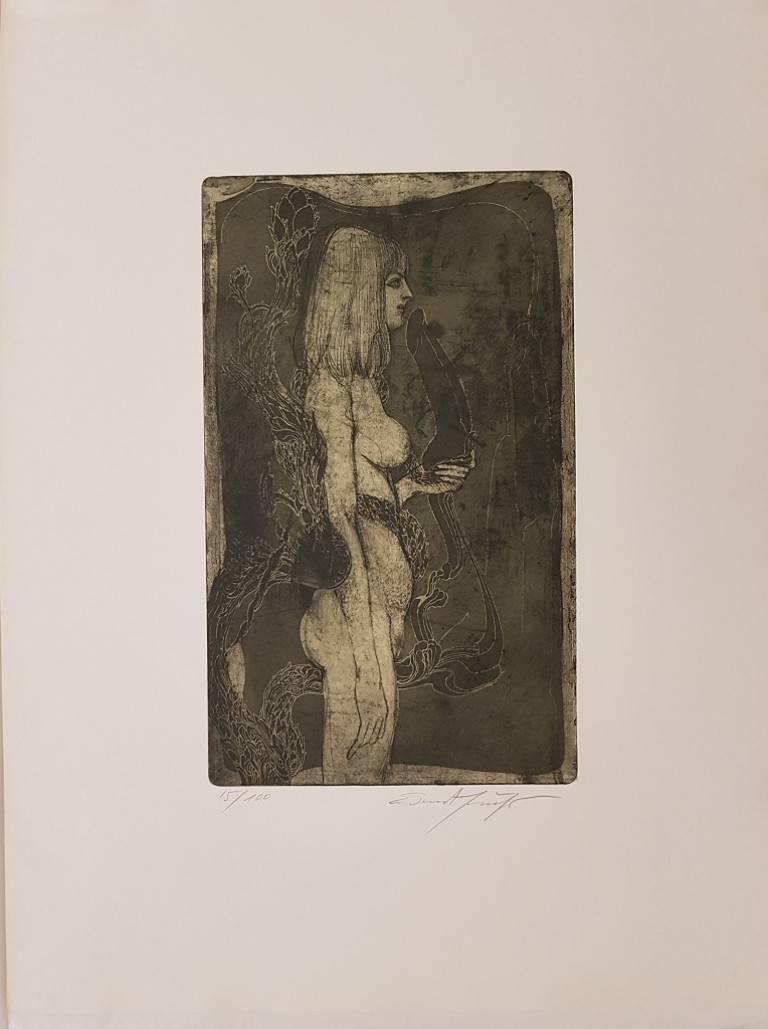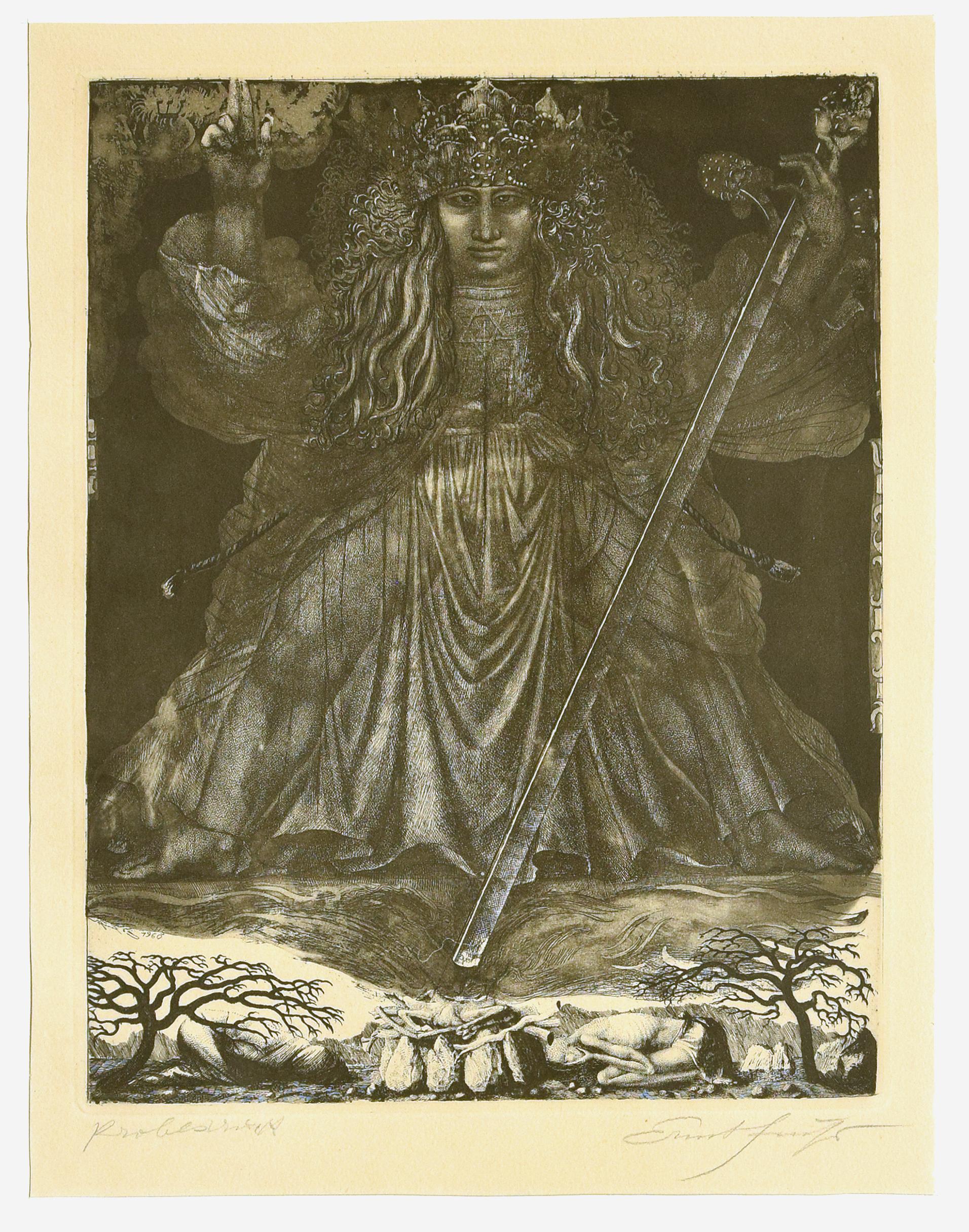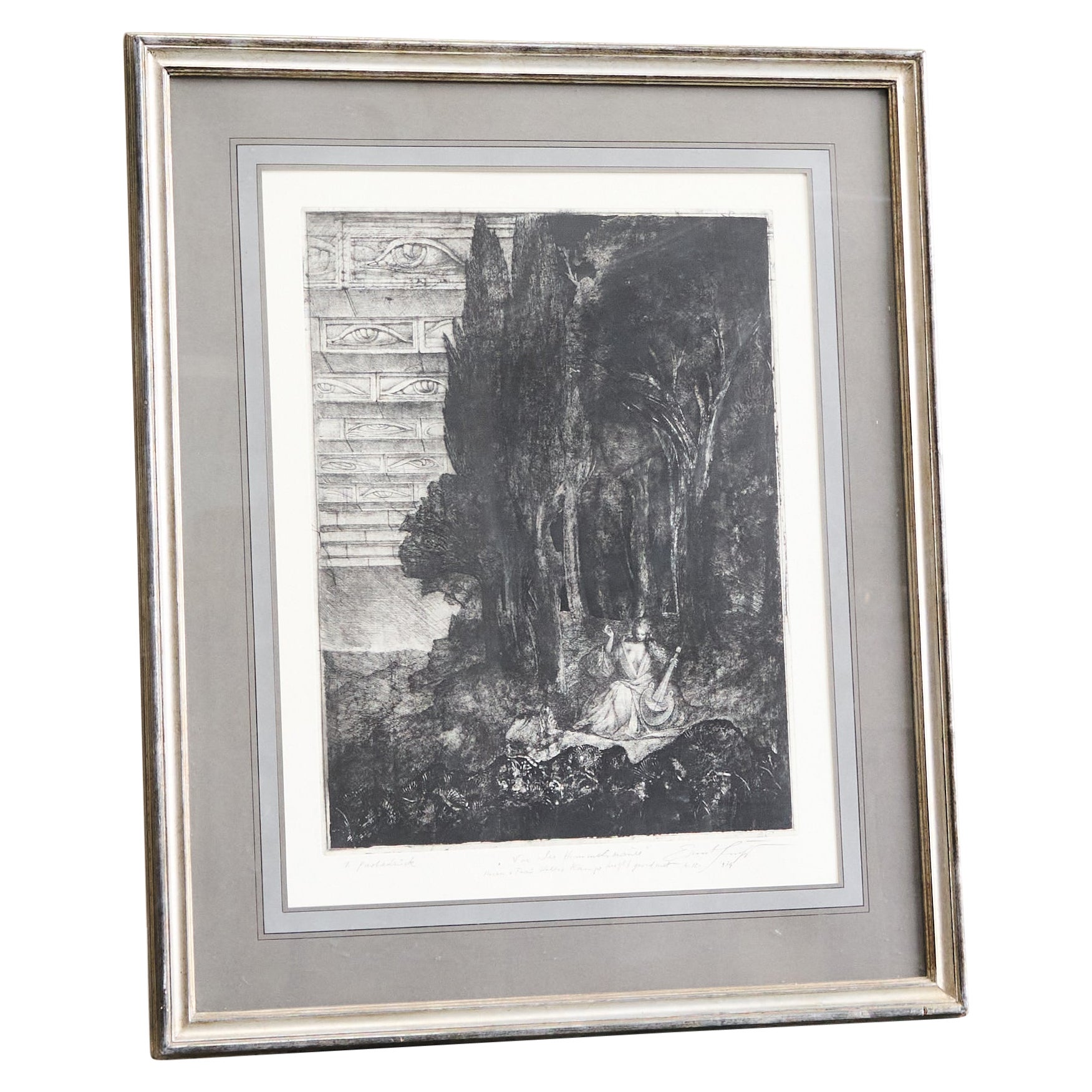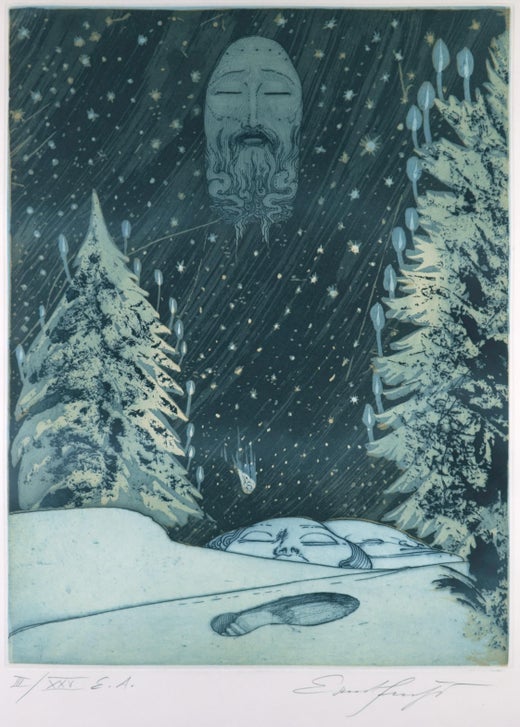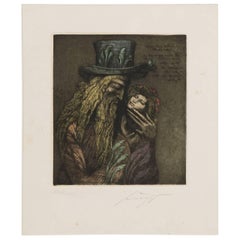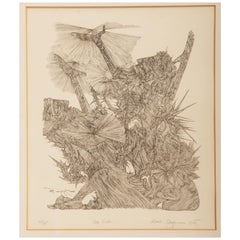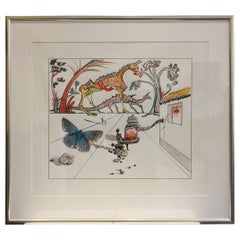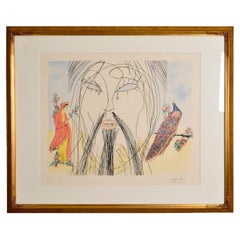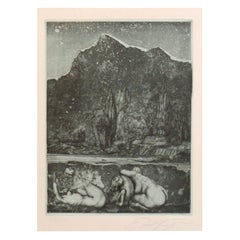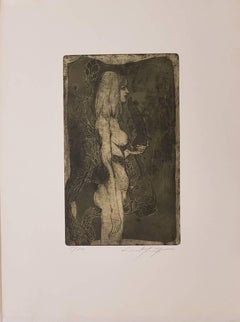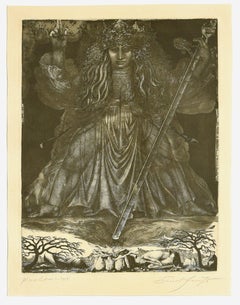Items Similar to Ernst Fuchs Etching Flora Okuli
Want more images or videos?
Request additional images or videos from the seller
1 of 8
Ernst Fuchs Etching Flora Okuli
$944.75
£702.32
€790
CA$1,317.91
A$1,429.64
CHF 751.78
MX$17,395.79
NOK 9,398.50
SEK 8,863.94
DKK 6,016.33
About the Item
Ernst Fuchs "Flora Okuli"
Etching on handmade paper number 9523/10000, sign. Measures: 24 x 16.5 (43 x 31.5) cm.
- Creator:Ernst Fuchs (Artist)
- Dimensions:Height: 16.93 in (43 cm)Width: 12.6 in (32 cm)Depth: 0.4 in (1 cm)
- Place of Origin:
- Period:
- Date of Manufacture:1967
- Condition:
- Seller Location:Vienna, AT
- Reference Number:1stDibs: LU1174211613583
Ernst Fuchs
Ernst Fuchs was a very poliedric artist. He was a painter, draftsman, printmaker, sculptor, architect, stage designer, composer, poet, singer and one of the founders of the Vienna School of Fantastic Realism. In 1972, he acquired the derelict Otto Wagner Villa in Hütteldorf, which he restored and transformed. The villa was inaugurated as the Ernst Fuchs Museum in 1988.
About the Seller
4.4
Gold Seller
Premium sellers maintaining a 4.3+ rating and 24-hour response times
Established in 2013
1stDibs seller since 2015
1,598 sales on 1stDibs
Typical response time: 1 hour
- ShippingRetrieving quote...Shipping from: Vienna, Austria
- Return Policy
Authenticity Guarantee
In the unlikely event there’s an issue with an item’s authenticity, contact us within 1 year for a full refund. DetailsMoney-Back Guarantee
If your item is not as described, is damaged in transit, or does not arrive, contact us within 7 days for a full refund. Details24-Hour Cancellation
You have a 24-hour grace period in which to reconsider your purchase, with no questions asked.Vetted Professional Sellers
Our world-class sellers must adhere to strict standards for service and quality, maintaining the integrity of our listings.Price-Match Guarantee
If you find that a seller listed the same item for a lower price elsewhere, we’ll match it.Trusted Global Delivery
Our best-in-class carrier network provides specialized shipping options worldwide, including custom delivery.More From This Seller
View AllErnst Fuchs "Jakob Und Joseph" Etching, 1976
By Ernst Fuchs
Located in Vienna, AT
Ernst Fuchs
"Jacob and Joseph"
etching
Hand signed, numbered, 1763/3000
Edition 3000 copies.
Format of display:
18.5 x 16.5cm, on handmade paper 29 x 24cm in glued in passepart...
Category
Vintage 1970s Austrian Paintings
Materials
Paper
Ernst Degasperi Etching "Zum Licht"
Located in Vienna, AT
Ernst Degasperi Etching "Zum LIcht" Number 43/65 from 1972.
Print only 30 x 35cm
Aluminum frame with glass front.
Category
Antique Early 1900s Austrian Prints
Materials
Paper
Lithography by Salvador Dali for "Kohle Morgen / Coal Tomorrow"
By Salvador Dalí
Located in Vienna, AT
"Coal Morning" lithograph by Salvador Dali, newly framed, 1977, sheet dimensions: 52 x 62 cm, frame dimensions: 92 x 100 cm, printed on Hahnemühle handmade paper, limited edition of ...
Category
Vintage 1970s Spanish Prints
Materials
Paper
Salvador Dali "Confucius" Etching
By Salvador Dalí
Located in Vienna, AT
Confucius, hand-signed: Dali, numbered: 45/300, drypoint with pochoir in color, partly colored on wove paper, printing plate size approx. 50 x 66cm, sheet size glazed, framed
Category
Vintage 1980s Spanish Prints
Materials
Paper
Karl Axel Pehrson Botanical Motif With Bird, Color Lithograph
Located in Vienna, AT
Botanical motif with bird, color lithograph by Karl Axel Pehrson from the 1930s signed and dated -73, proof print, numbered IX.
Category
Vintage 1930s Swedish Prints
Materials
Paper
Color Lithograph by Walter Bengtsson
Located in Vienna, AT
Walter Bengtsson. Color lithograph, signed, numbered 105/260,
Framed, dimensions 74 x 58 cm.
Category
Vintage 1960s Swedish Prints
Materials
Paper
You May Also Like
Flora Okuli - Etching by Ernst Fuchs - Late 20th Century
By Ernst Fuchs
Located in Roma, IT
Flora Okuli is an original artwork realized by the Austrian artist Ernst Fuchs (1920-2015).
Aquatint etching. Signed and numbered by the artist on the lower margin.
Edition of 10.0...
Category
Late 20th Century Contemporary Figurative Prints
Materials
Etching, Aquatint
Ernst Fuchs 'Under the Snow Lilith' Print, 1969
By Ernst Fuchs
Located in Los Angeles, CA
Surreal dry point etching, 'Under the Snow Lilith' by Ernst Fuchs, signed lower left, right, numbered '27/150,' mounted and framed, panel size: 10.5" x 13.5" (without frame).
Category
Vintage 1960s German Mid-Century Modern Prints
Materials
Paper
The Nymph Eva - Original Etching by E. Fuchs - 1968
By Ernst Fuchs
Located in Roma, IT
Hand signed and numbered. Edition of 100 prints. Etching on ivory colored paper.
Image Dimensions : 40 x 24 cm
In excellent condition.
Category
1960s Modern Nude Prints
Materials
Etching
Samson, the Judge - Original Etching by Ernst Fuchs - 1960s
By Ernst Fuchs
Located in Roma, IT
Samson, The Judge is an original artwork realized between 1963 - 1967 by the famous artist Ernst Fuchs.
Black and white etching.
Included frame: 72.5 x 1.5...
Category
1960s Contemporary Figurative Prints
Materials
Etching
$1,076 Sale Price
25% Off
Ernst Fuchs 'Waldidylle vor der Himmelsmauer' Hand Signed Artist's Proof 1974
By Ernst Fuchs
Located in Meer, VAN
Ernst Fuchs 'Waldidylle vor der Himmelsmauer' Hand Signed Artist's Proof 1974.
A mysterious and wonderful work by famous artist Ernst Fuchs (1930-2015), the best friend of Salvador ...
Category
Mid-20th Century Austrian Mid-Century Modern Decorative Art
Materials
Wood, Paper
Engraving #1 by Ernst Fuchs: KABBALAH (SEFER YETSIRA and 32 PATHS OF WISDOM)
By Ernst Fuchs
Located in Cliffside Park, NJ
Original engraving #7 by Ernst FUCHS from Kabbalah (THIRTY-TWO PATHS OF WISDOM by SEFER YETZIRA), 1978
Etching signed and numbered 16/30 E.A.
Page size - 30 ...
Category
1970s Modern Figurative Prints
Materials
Paper, Etching
More Ways To Browse
Antique Duck Prints
Elliot Bird
George Cooke
Hawk Antiques
Napoleon Engraving
Rhodes Greece
Set Of 12 Prints
Urn Prints
Baroque French Prints
Charles Snaffles Johnson Payne
Coat Of Arms Engraving
Das Buch Der Welt
Edmund Dulac
Exotic Bird Prints
Glass Fruit Decoration
John Jones Frames
Pavilion Antiques
Prints Of Men Fashion
